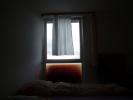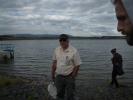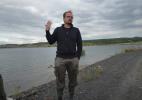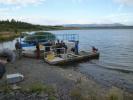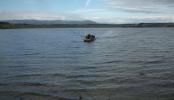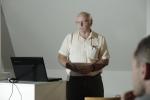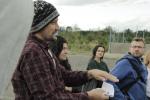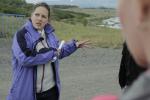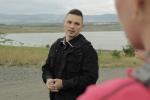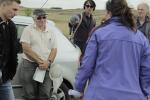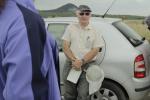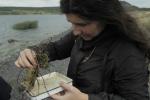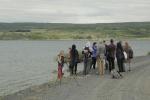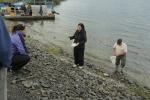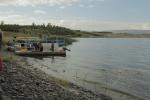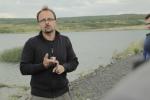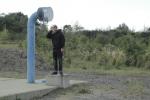Blog posts
Posts
A Hackers Manifesto, verze 4.0, kapitola 4.
By samotar, 10 January 2023
Alfred ve dvoře čili Poznámka k pražské hetero-utopii
By samotar, 10 November 2022
Trnovou korunou a tankem do srdíčka
By samotar, 2 July 2022
Hakim Bey - Informační válka
By samotar, 26 March 2022
Jean-Pierre Dupuy: Do we shape technologies, or do they shape us?
By samotar, 6 March 2022
Václav Cílek: Záhada zpívající houby
By samotar, 15 February 2022
Guy Debord - Teorie dérive
By samotar, 21 January 2022
Jack Burnham – Systémová estetika
By samotar, 19 November 2021
Poznámka pod čarou k výstavě Handa Gote: Věc, nástroj, čas, fetiš, hygiena, tabu
By samotar, 13 July 2021
Rána po ránech
By samotar, 23 May 2021
Na dohled od bronzového jezdce
By samotar, 4 March 2021
Z archivu:Mlha - ticho - temnota a bílé díry
By samotar, 7 October 2020
Zarchivu: Hůlna-kejdže
By samotar, 7 September 2020
Center for Land Use Interpretation
By samotar, 18 June 2020
Dawn Chorus Day - zvuky za svítání
By samotar, 30 April 2020
Z archivu: Bílé Břehy 2012 a Liběchov 2011
By , 3 April 2020
Z archivu: Krzysztof Wodiczko v DOXU
By samotar, 26 March 2020
GARY SNYDER: WRITERS AND THE WAR AGAINST NATURE
By samotar, 20 March 2020
Podoby domova: hnízda, nory, doupata, pavučiny, domestikace a ekologie
By samotar, 17 March 2020
Michel Serres: Transdisciplinarity as Relative Exteriority
By samotar, 5 November 2019
Pavel Ctibor: Sahat zakázáno
By samotar, 22 September 2019
Emmanuel Lévinas: HEIDEGGER, GAGARIN A MY
By samotar, 19 September 2019
Atmosférické poruchy / Atmospheric Disturbances - Ustí nad Labem
By samotar, 13 September 2019
Erkka Laininen: A Radical Vision of the Future School
By samotar, 10 August 2019
Anton Pannekoek: The Destruction of Nature (1909)
By samotar, 21 July 2019
Co padá shůry - světlo, pelyněk, oheň a šrot
By samotar, 30 December 2018
2000 slov v čase klimatických změn - manifest
By samotar, 2 November 2018
Vladimír Úlehla, sucho, geoinženýrství, endokrinologie, ekologie a Josef Charvát
By samotář, 22 September 2018
Lukáš Likavčan: Thermodynamics of Necrocracy - SUVs, entropy, and contingency management
By samotar, 20 July 2018
Tajemství spolupráce: Miloš Šejn
By samotar, 27 June 2018
Invisible Images (Your Pictures Are Looking at You) Trevor Paglen
By samotar, 2 June 2018
KŘEST KNIHY KRAJINA V POZORU: THE LANDSCAPE IN FOCUS.
By samotar, 18 May 2018
Případ zchudlé planety:Vojtěch Kotecký
By samotar, 22 April 2018
Rozhovor na Vltavě: Jak umění reaguje na dobu antropocénu?
By samotar, 10 March 2018
Skolt Sámi Path to Climate Change Resilience
By samotar, 10 December 2017
Brian Holmes: Driving the Golden Spike - The Aesthetics of Anthropocene Public Space
By samotar, 22 November 2017
Ohlédnutí/Revisited Soundworm Gathering
By samotař, 9 October 2017
Kleté krajiny
By samotar, 7 October 2017
Kinterova Jednotka a postnatura
By samotař, 15 September 2017
Ruiny-Černý trojúhelník a Koudelkův pohyb v saturnských kruzích
By samotar, 13 July 2017
Upsych316a Universal Psychiatric Church
By Samotar, 6 July 2017
Miloš Vojtěchovský: Krátká rozprava o místě z roku 1994
By milos, 31 May 2017
Za teorií poznání (radostný nekrolog), Bohuslav Blažek
By miloš vojtěchovský, 9 April 2017
On the Transmutation of Species
By miloš vojtěchovský, 27 March 2017
Gustav Metzger: Poznámky ke krizi v technologickém umění
By samotař, 2 March 2017
CYBERPOSITIVE, Sadie Plant a Nick Land
By samotař, 2 March 2017
Ivan Illich: Ticho jako obecní statek
By samotař, 18 February 2017
Dialog o primitivismu – Lawrence Jarach a John Zerzan
By samotar, 29 December 2016
Thomas Berry:Ekozoická éra
By samotař, 8 December 2016
Jason W. Moore: Name the System! Anthropocenes & the Capitalocene Alternative
By miloš vojtěchovský, 24 November 2016
Michel Serres: Revisiting The Natural Contract
By samotař, 11 November 2016
Best a Basta době uhelné
By samotař, 31 October 2016
Epifanie, krajina a poslední člověk/Epiphany, Landscape and Last Man
By Samotar, 20 October 2016
Doba kamenná - (Ein, Eisen, Wittgen, Frankenstein), doba plastová a temná mineralogie
By samotař, 4 October 2016
Hledání hlasu řeky Bíliny
By samotař, 23 September 2016
Harrisons: A MANIFESTO FOR THE 21ST CENTURY
By , 19 September 2016
T.J. Demos: Anthropocene, Capitalocene, Gynocene: The Many Names of Resistance
By , 11 September 2016
Bratrstvo
By samotař, 1 September 2016
Neptunismus a plutonismus na vyhaslé sopce Bořeň
By , 14 August 2016
Murray Bookchin: Toward an Ecological Society/ K ekologické společnosti (1974)
By samotař, 31 July 2016
Metafory, endofyzika, manželé Themersonovi a Gordon Pask
By samotař, 15 July 2016
Anima Mundi Revisited
By miloš vojtěchovský, 28 June 2016
Simon A. Levin: The Evolution of Ecology
By samotař, 21 June 2016
Anna Remešová: Je možné představit si změnu?
By samotar, 20 June 2016
Jan Hloušek: Uranové město
By samotař, 31 May 2016
Josef Šmajs: Složí lidstvo zkoušku své racionální dospělosti?
By samotař, 20 May 2016
Manifest The Dark Mountain Project
By Samotar, 3 May 2016
Pokus o popis jednoho zápasu
By samotar, 29 April 2016
Václav Cílek: Antropocén – velké zrychlení světa
By Slawomír Uher, 23 April 2016
Nothing worse or better can happen
By Ewa Jacobsson, 5 April 2016
Real Reason we Can’t Stop Global Warming: Saskia Sassen
By , 18 March 2016
The Political Economy of the Cultural Commons and the Nature of Sustainable Wealth
By samotar, 12 March 2016
Jared Diamond - Easter's End
By , 21 February 2016
Felix Guattari - Three Ecologies (part 1)
By , 19 February 2016
W. H. Auden: Journey to Iceland
By , 9 February 2016
Jussi Parikka: The Earth
By Slawomír Uher, 8 February 2016
Brian Holmes: Extradisciplinary Investigations. Towards a New Critique of Institutions
By Stanislaw, 7 February 2016
Co číhá za humny? neboli revoluce přítomnosti
By Miloš Vojtěchovský, 31 January 2016
Podivuhodný osud polárníka a malíře Julia Payera
By , 23 January 2016
Red Sky: The Eschatology of Trans
By Miloš Vojtěchovský, 19 January 2016
#AKCELERACIONISTICKÝ MANIFEST (14. května 2013)
By samotar, 7 January 2016
The Forgotten Space: Notes for a Film
By , 7 January 2016
Rise and Fall of the Herring Towns:Impacts of Climate and Human Teleconnections
By , 25 December 2015
Hlubinná, temná, světlá i povrchová ekologie světa
By , 22 December 2015
Three short movies: Baroque Duchcov, New Lakes of Mostecko and Lignite Clouds
By Michal Kindernay, 21 December 2015
Lenka Dolanová: Umění mediální ekologie
By , 21 December 2015
Towards an Anti-atlas of Borders
By , 20 December 2015
Pavel Mrkus - KINESIS, instalace Nejsvětější Salvátor
By Miloš Vojtěchovský, 6 December 2015
Tváře/Faces bez hranic/Sans Frontiers
By Miloš Vojtěchovský, 29 November 2015
Josef Šmajs: Ústava Země/A Constitution for the Earth
By Samotar, 28 November 2015
John Jordan: The Work of Art (and Activism) in the Age of the Anthropocene
By Samotar, 23 November 2015
Humoreska: kočky, koulení, hroby a špatná muška prince Josefa Saského
By Samotar, 13 November 2015
Rozhovor:Před věčným nic se katalogy nesčítají
By Samotar, 11 November 2015
Lecture by Dustin Breiting and Vít Bohal on Anthropocene
By Samotar, 8 November 2015
Antropocén a mocné žblunknutí/Anthropocene and the Mighty Plop
By Samotar, 2 November 2015
Rory Rowan:Extinction as Usual?Geo-Social Futures and Left Optimism
By Samotar, 27 October 2015
Pavel Klusák: Budoucnost smutné krajiny/The Future of a Sad Region
By ll, 19 October 2015
Na Zemi vzhůru nohama
By Alena Kotzmannová, 17 October 2015
Upside-down on Earth
By Alena Kotzmannová, 17 October 2015
Thomas Hylland Eriksen: What’s wrong with the Global North and the Global South?
By Samotar, 17 October 2015
Nýey and Borealis: Sonic Topologies by Nicolas Perret & Silvia Ploner
By Samotar, 12 October 2015
Images from Finnmark (Living Through the Landscape)
By Nicholas Norton, 12 October 2015
Bruno Latour: Love Your Monsters, Why We Must Care for Our Technologies As We Do Our Children
By John Dee, 11 October 2015
Temné objekty k obdivu: Edward Burtynsky, Mitch Epstein, Alex Maclean, Liam Young
By Samotar 10 October 2015, 10 October 2015
Czech Radio on Frontiers of Solitude
By Samotar, 10 October 2015
Beyond Time: orka, orka, orka, nečas, nečas, nečas
By Samotar, 10 October 2015
Langewiese and Newt or walking to Dlouhá louka
By Michal Kindernay, 7 October 2015
Notice in the Norwegian newspaper „Altaposten“
By Nicholas Norton, 5 October 2015
Interview with Ivar Smedstad
By Nicholas Norton, 5 October 2015
Iceland Expedition, Part 2
By Julia Martin, 4 October 2015
Closing at the Osek Monastery
By Michal Kindernay, 3 October 2015
Iceland Expedition, Part 1
By Julia Martin, 3 October 2015
Finnmarka a kopce / The Hills of Finnmark
By Vladimír Merta, 2 October 2015
Od kláštera Osek na Selesiovu výšinu, k Lomu, Libkovicům, Hrdlovce a zpět/From The Osek Cloister to Lom and back
By Samotar, 27 September 2015
Sápmelažžat Picnic and the Exploration of the Sami Lands and Culture
By Vladimir, 27 September 2015
Gardens of the Osek Monastery/Zahrady oseckého kláštera
By ll, 27 September 2015
Workshop with Radek Mikuláš/Dílna s Radkem Mikulášem
By Samotářka Dagmar, 26 September 2015
Czech Radio Interview Jan Klápště, Ivan Plicka and mayor of Horní Jiřetín Vladimír Buřt
By ll, 25 September 2015
Bořeň, zvuk a HNP/Bořeň, sound and Gross National Product
By Samotar, 25 September 2015
Já, Doly, Dolly a zemský ráj
By Samotar, 23 September 2015
Up to the Ore Mountains
By Michal, Dagmar a Helena Samotáři , 22 September 2015
Václav Cílek and the Sacred Landscape
By Samotář Michal, 22 September 2015
Picnic at the Ledvice waste pond
By Samotar, 19 September 2015
Above Jezeří Castle
By Samotar, 19 September 2015
Cancerous Land, part 3
By Tamás Sajó, 18 September 2015
Ledvice coal preparation plant
By Dominik Žižka, 18 September 2015
pod hladinou
By Dominik Žižka, 18 September 2015
Cancerous Land, part 2
By Tamás Sajó, 17 September 2015
Cancerous Land, part 1
By Tamás Sajó, 16 September 2015
Offroad trip
By Dominik Žižka, 16 September 2015
Ekologické limity a nutnost jejich prolomení
By Miloš Vojtěchovský, 16 September 2015
Lignite Clouds Sound Workshop: Days I and II
By Samotar, 15 September 2015
Recollection of Jezeří/Eisenberg Arboretum workshop
By Samotar, 14 September 2015
Walk from Mariánské Radčice
By Michal Kindernay, 12 September 2015
Mariánské Radčice and Libkovice
By Samotar, 11 September 2015
Tušimice II and The Vicarage, or the Parsonage at Mariánské Radčice
By Samotar, 10 September 2015
Most - Lake, Fish, algae bloom
By Samotar, 8 September 2015
Monday: Bílina open pit excursion
By Samotar, 7 September 2015
Duchcov II. - past and tomorrow
By Samotar, 6 September 2015
Duchcov II.
By Samotar, 6 September 2015
Arrival at Duchcov I.
By Samotar, 6 September 2015
Poznámka k havárii rypadla KU 300 (K severu 1)
By Samotar, 19 August 2015
Most - Lake, Fish, algae bloom
We are accommodated in a beautiful retro hotel Domina near the Municipal Museum in Most and the city's main boulevard.
The view from the twelfth floor is breathtaking. Later we found out that the building of a former high-school dormitory operates also as social flats for unemployed citizens of Most.
On Tuesday afternoon we made an excursion to the new lake near Most with Mr. Ivo Přikryl. The old town of Brux/Most was swallowed by the lignite quarry Ležáky during the '70s and '80s. It disappeared on the slope of the Hněvín Hill. After all coal had been dug out, the mining company (the state-owned PKU) thought it the cheapest and most human to transform the 50-meter-deep pit into a beautiful lake.
The new lake called Most is being flooded from Ohře and it has already reached the desired water level. Mr. Přikryl presented and discussed with us results of the continuous hydro-biological measurement of the concentration of zoo-plankton and benthos since the flooding of the residual lignite mine. Changes in the quantity and quality of water, flowing from different sources, and the development of stratification in the lake water both affect the composition of zoo-plankton and benthos. Original sources of zoo-plankton inoculum, which are the reservoirs in the Lake Most own catchment area, are monitored too. Another important source that will significantly affect the formation of the newly formed lake, is the river Ohře (Eger), which contributes with the greatest volume of water. At the same time, the hydro-chemical water quality parameters and their influence on the formation of zoo-plankton and benthos communities are monitored.
Two employees of the PKU explained the current situation, how the landscape surrounding the lake and next future outlooks when the lake will be handed over its new owner, the City of Most, and used for sport and recreation.
We asked the head of the group of hydro-biologists from the Academy of Science's subdivision in České Budějovice to take us for a short ride on their exploration boat. They did.
Ivo Přikryl
Remediation of the environmental (and social) disturbances caused by open cast brown coal mining in the past in northwest Bohemia is a priority for state environmental policy. In order to provide a concept for the full restoration of land following disturbances caused by open cast mining, a special interdisciplinary project supported by a grant from the Czech Ministry of Environment was started in 2000. The initial stage of the project was intended to summarize and evaluate the findings and the works carried out in connection with various reclamation activities in the afflicted area over a period of more than 50 years.
The main aims of the three-year project are to make use of the best available landscape environmental management knowledge in order to harmonize the ecological, aesthetic, productive and social functions of new valuable landscape, including the recovery of historical continuity and an understanding of “landscape memory”.
The basic landscape functions were assessed on two different scales. On a large scale, the relevant attributes were investigated over the whole area of the Sokolov brown coal basin (220 km2). The data and experience acquired were used to define large-scale guiding principles for the rehabilitation of a post-mining landscape. On a small scale, the basic characteristics and functions of the landscape were analysed in the Litov-Chlum model area (2 km2). The information derived from this analysis was used to formulate a small-scale approach for the rehabilitation of the model area and also to define general methodological principles.
Ivo Přikryl, RNDr. (b. 1952) is a hydrobiologist working at ENKI o.p.s. Třeboň. His research focuses on zooplankton in lakes, dams and ponds mostly in Central Europe. He is currently studying the possibilities for the protection of wetlands , marshes, the management of dams and the recultivation of the landscape after periods of open cast mining, especially in the Ore Mountains.
…
Old and New Lakes of Mostecko: A Lecture by hydrobiologist Ivo Přikryl
A remediation of environmental (and social) disturbances caused by extensive open cast brown coal mining in northwest Bohemia is a priority for the Czech environmental policy. In order to provide a conceptual basis for the full restoration of land following such disturbances, a special interdisciplinary project supported by a grant from the Ministry of the Environment of the Czech Republic was started in 2000. The initial stage of the project was intended to summarize and evaluate findings and works carried out in connection with various reclamation activities in the afflicted area over a period of more than 50 years.
The main aims of the three-year project are to make use of the best available knowledge in landscape environmental management, so as to harmonize the ecological, aesthetic, productive and social functions of a valuable new landscape, including the recovery of historical continuity and an understanding of “landscape memory”.
The basic landscape functions were assessed at two different levels of scale. On the large scale, the relevant attributes were investigated over the whole area of the Sokolov brown coal basin (220 km2). The data and experience acquired were used to define large scale guiding principles for the rehabilitation of a post-mining landscape. On the small scale, the basic characteristics and functions of the landscape were analysed in the Litov-Chlum model area (2 km2). The information derived from this analysis was used to formulate a small-scale approach for the rehabilitation of the model area and also to define general methodological principles.
The lecture will be held in Czech and is for free.
To participate in the event please send a short application (stating your name and the title of the lecture) via e-mail to info@frontiers-of-solitude.org. The applicants will receive further specification regarding the meeting point and time.
Duration cca 2 hours
Max. 15 participants
For more information please contact Dagmar Šubrtová: dasas@email.cz
…
